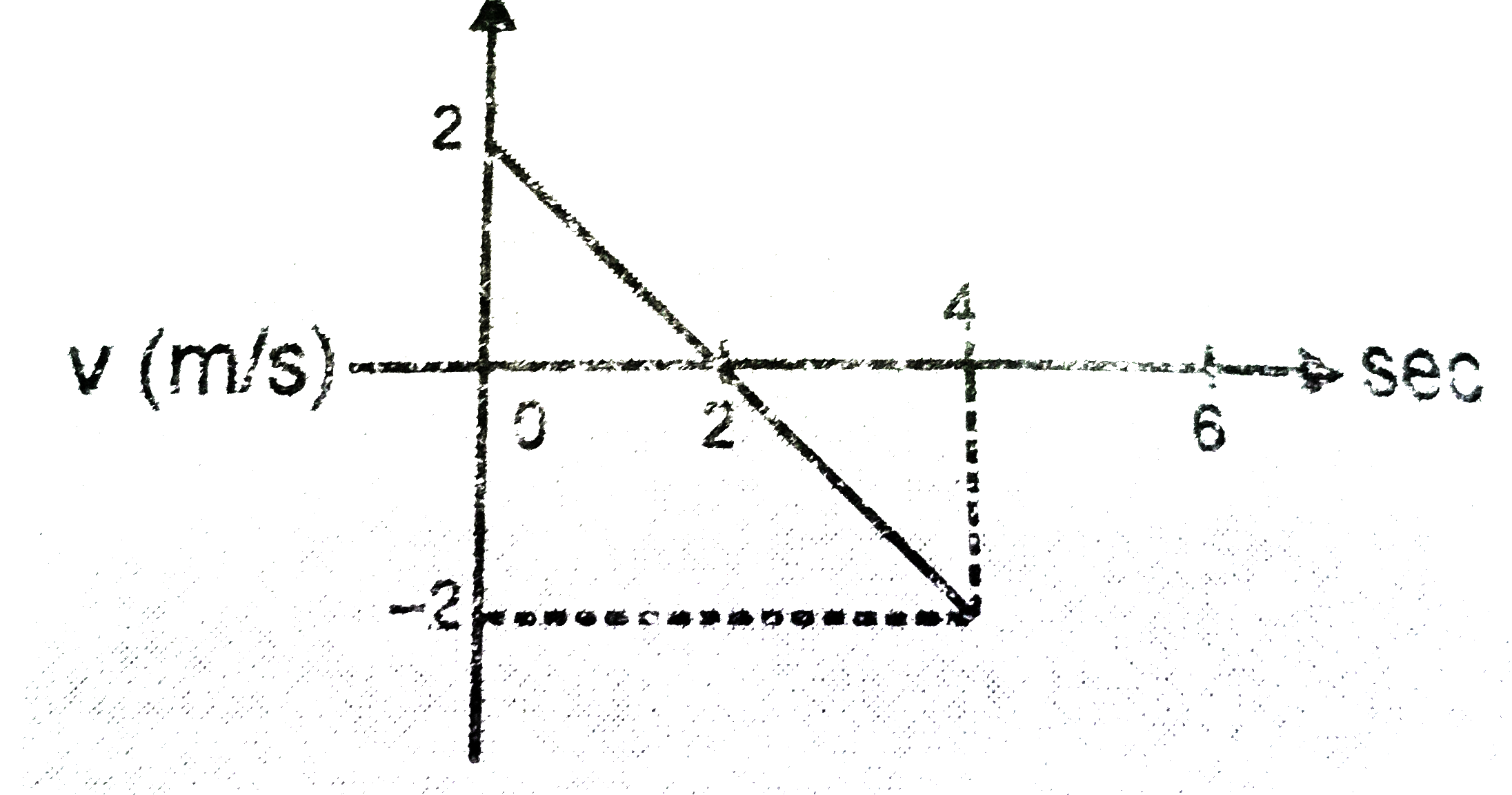If the displacement of a particle is zero, then distance covered by it
Must be zero
Must not be zero
Must be unity
May not be zero
The correct Answer is:C
To solve the question, "If the displacement of a particle is zero, then what can be said about the distance covered by it?", we can follow these steps:
1. Understanding Displacement:
- Displacement is defined as the change in position of an object. It is a vector quantity, which means it has both magnitude and direction.
- If the displacement of a particle is zero, it means that the particle has returned to its original position after moving.
2. Understanding Distance:
- Distance, on the other hand, is a scalar quantity that represents the total length of the path traveled by the particle, regardless of its starting and ending points.
- Distance does not take direction into account; it only considers how much ground has been covered.
3. Analyzing the Scenario:
- Consider a particle that starts at point A, moves to point B, and then returns back to point A.
- In this case, the initial and final positions are the same, resulting in a displacement of zero.
4. Calculating Distance:
- While the displacement is zero, the particle has traveled from A to B and back to A.
- The total distance covered would be the length of the path from A to B plus the length of the path from B back to A.
5. Conclusion:
- Therefore, even though the displacement is zero, the distance covered by the particle is not zero.
- The distance can be any positive value depending on how far the particle traveled before returning to its starting point.
Final Answer:
- The distance covered by the particle must not be zero.
- Displacement is defined as the change in position of an object. It is a vector quantity, which means it has both magnitude and direction.
- If the displacement of a particle is zero, it means that the particle has returned to its original position after moving.
- Distance, on the other hand, is a scalar quantity that represents the total length of the path traveled by the particle, regardless of its starting and ending points.
- Distance does not take direction into account; it only considers how much ground has been covered.
- Consider a particle that starts at point A, moves to point B, and then returns back to point A.
- In this case, the initial and final positions are the same, resulting in a displacement of zero.
- While the displacement is zero, the particle has traveled from A to B and back to A.
- The total distance covered would be the length of the path from A to B plus the length of the path from B back to A.
- Therefore, even though the displacement is zero, the distance covered by the particle is not zero.
- The distance can be any positive value depending on how far the particle traveled before returning to its starting point.
- The distance covered by the particle must not be zero.
Topper's Solved these Questions
- MOTION IN STRAIGHT LINEBOOK - AAKASH INSTITUTE ENGLISHCHAPTER - MOTION IN STRAIGHT LINEEXERCISE - Assignment (SECTION - B)
19 Videos
- MOTION IN STRAIGHT LINEBOOK - AAKASH INSTITUTE ENGLISHCHAPTER - MOTION IN STRAIGHT LINEEXERCISE - Assignment (SECTION - C)
7 Videos
- MOTION IN STRAIGHT LINEBOOK - AAKASH INSTITUTE ENGLISHCHAPTER - MOTION IN STRAIGHT LINEEXERCISE - Try Yourself
40 Videos
- MOTION IN A STRAIGHT LINEBOOK - AAKASH INSTITUTE ENGLISHCHAPTER - MOTION IN A STRAIGHT LINEEXERCISE - ASSIGNMENT (SECTION - D)
15 Videos
- MOVING CHARGE AND MAGNESIUMBOOK - AAKASH INSTITUTE ENGLISHCHAPTER - MOVING CHARGE AND MAGNESIUMEXERCISE - SECTION D
16 Videos
Similar Questions
If the displacement of a body is zero is the distance covered by it necessarily zero ? Explain with suitable illustration.
View SolutionIf the displacement of a body is zero is the distance covered by it necessarily zero ? Explain with suitable illustration.
View SolutionExplain with the help of an example, if the displacement of a particle is zero, then it is not necessary that the distance traversed by it is also zero.
View SolutionFigure a represents the speed-time graph for a particle .Find the distance covered by the particle betweent=10 min and t= 30 min .

View SolutionA particle moves along the x-axis obeying the equation x=t(t−1)(t−2), where x is in meter and t is in second
a. Find the initial velocity of the particle.
b. Find the initial acceleration of the particle.
c. Find the time when the displacement of the particle is zero.
d. Find the displacement when the velocity of the particle is zero.
e. Find the acceleration of the particle when its velocity is zero.
View SolutionVelocity time graph for a particle moving in a line is given.
Calculate the displacement of the particle and distance travelled in first 4 seconds.

View SolutionConsider the motion of the tip of the minute hand of a clock. In one hour
(a) the displacement is zero
(b) the distance covered is zero
(c) the average speed is zero
(d) the average velocity is zero
View SolutionAssertion: Displacement of a body may be zero when distance travelled by it is not zero.
Reason: The displacement is the longest distance between initial and final position.
View SolutionThe relation 3t=√3x+6 describe the displacement of a particle in one direction where x is in metres and t in sec.
The displacement, when velocity is zero is
View SolutionStatement I: The displacement of a body may be zero, though its distance can be finite.
Statement II: If the bodt moves such that finally it arrives at the initial point, then displacement is zero while distance is finite.
View Solution
